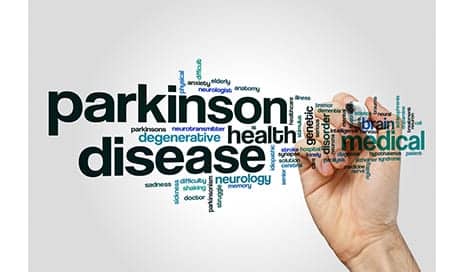Among patients with Parkinson’s disease, the use of noninvasive brain stimulation and physical therapy—alone or in combination—may help improve their walking speed and step length, according to a recent study.
The study, performed by researchers at King Chulalongkorn Memorial Hospital in Bangkok, Thailand, included 60 Parkinson’s patients, average age 65, with slow walking speed. All of the participants were randomly assigned to three groups.
The first group received six 30-minute sessions of transcranial direct current stimulation (tDCS) over a 2-week period. This procedure delivers a mild electrical current through the brain, with the goal of stimulating neural networks involved in motor coordination. The second group received physical therapy, focusing on joint range of motion and flexibility, leg muscle strengthening, and balance and gait training. The third group received both tDCS and physical therapy, according to a media release from Wolters Kluwer Health.
Using a computerized motion capture system, the researchers performed gait analysis to assess walking speed and other characteristics before and after treatment.
The three groups had similar and significant improvement in some measures of gait. Walking speed increased by an average of about 19%, with only minor differences between groups. Step length increased by approximately 12%. Both improvements lasted for at least 8 weeks after the end of treatment.
Other gait measurements—step width and cadence—showed little or no change. All groups also had a small improvement in scores on a standard PD rating scale, although the clinical relevance of this change was unclear, the release explains.
“Our study demonstrated that both tDCS and physical therapy are effective in improving the walking ability in patients with PD,” conclude Krisna Piravej, MD, and coauthors, in the release. “A combination of the treatments did not demonstrate a significantly better outcome.”
Physical therapy could provide an alternative in “resource limited” settings without access to tDCS, they suggest. In the future, the ability to provide “patient-specific stimulation” tDCS at home could offer additional advantages.
The study was published recently in the American Journal of Physical Medicine & Rehabilitation, published by Wolters Kluwer.
[Source(s): Wolters Kluwer Health, Science Daily]





